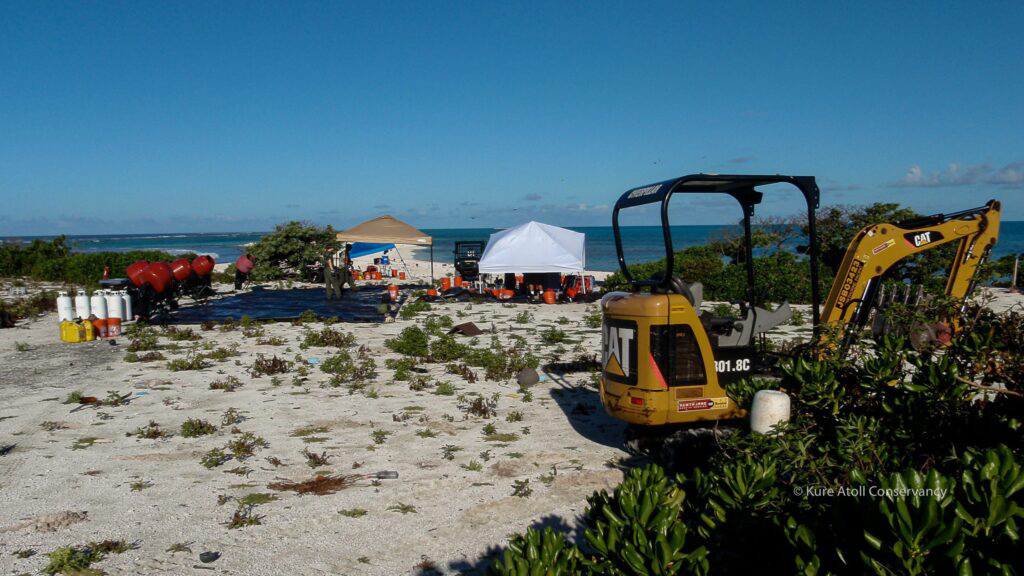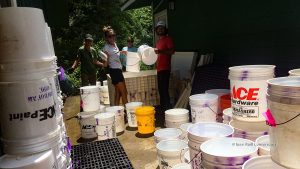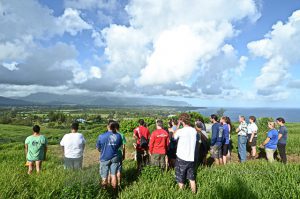Several remediation projects over the past 25 years (1991, 1992,1993,1994, 2008-2009, 2011) had failed to correct elevated levels of polychlorinated biphenyl (PCB) contaminates in the landfill. In 2016, the U.S. Coast Guard Civil Engineering Unit Alaska and their contractor Environmental Elemental, LLC (located in Hawaii) excavated 400-600 cubic yards of contaminated PCB soil from the landfill and reburied it in a more secure location on Green Island.
The reburial project on Kure temporarily disturbed highly productive seabird nesting and monk seal pupping habitat. Removal of vegetation was necessary to access the contaminated soil and rebury it. Per agreement with the USCG–and in an effort to prevent erosion from wind, rain, tidal surge, invasive weeds, and flooding–the DLNR field crews re-planted the area once the USCG PCB Soil Remediation was complete.


